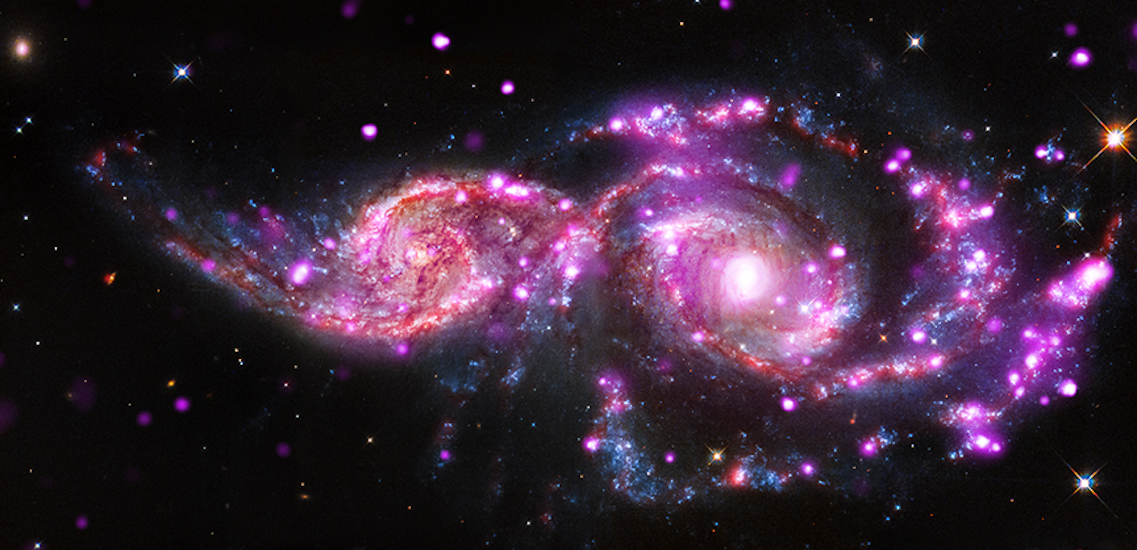
 Credit: X-ray: NASA/CXC/SAO/S.Mineo et al, Optical: NASA/STScI, Infrared: NASA/JPL-Caltech
Credit: X-ray: NASA/CXC/SAO/S.Mineo et al, Optical: NASA/STScI, Infrared: NASA/JPL-Caltech
Stir It Up
Intergalactic space is surprisingly crowded, and collisions between galaxies are surprisingly common. Galaxy collisions drive strong, supersonic shock waves, and these shock waves can then drive the formation of new stars and power other types of galactic activity (and may even help galaxies evolve from one type to another). A beautiful example is shown above, the collision of two spiral galaxies known as IC 2163 (the galaxy on the left) and NGC 2207 (on the right). The image is a combination of X-ray emission (from the Chandra X-ray Observatory), shown in a pinkish hue, an optical image from the Hubble Space Telescope in red, green and blue, and an infrared image from the Spitzer Space Telescope in red. The X-ray emission traces out the location of hot gas between the stars and also X-ray binaries, compact objects accreting material from an unfortunate companion star. Some of these X-ray binaries are unusually powerful and an unusually large number (28) fall into the rare class of so-called Ultraluminous X-ray sources (or ULXs for short). The Hubble image shows the locations of normal stars and star clusters, while the Spitzer image shows the location of dust embedded within dense streams of gas where new stars can form. The merger produces stars at an equivalent rate of more than 20 solar masses per year, about 20 times the current star formation rate in our Milky Way. But look for some local action in about 5 billion years (about the time our Sun fizzles out) when the Andromeda galaxy collides with us.
Published: July 26, 2021
<
HEA Dictionary ● Archive
● Search HEAPOW
● Other Languages
● HEAPOW on Facebook
● Download all Images
● Education ● HEAD
>

Each week the HEASARC
brings you new, exciting and beautiful images from X-ray and Gamma ray
astronomy. Check back each week and be sure to check out the HEAPOW archive!
Page Author: Dr. Michael F. Corcoran
Last modified Tuesday, 27-Feb-2024 10:06:50 EST


